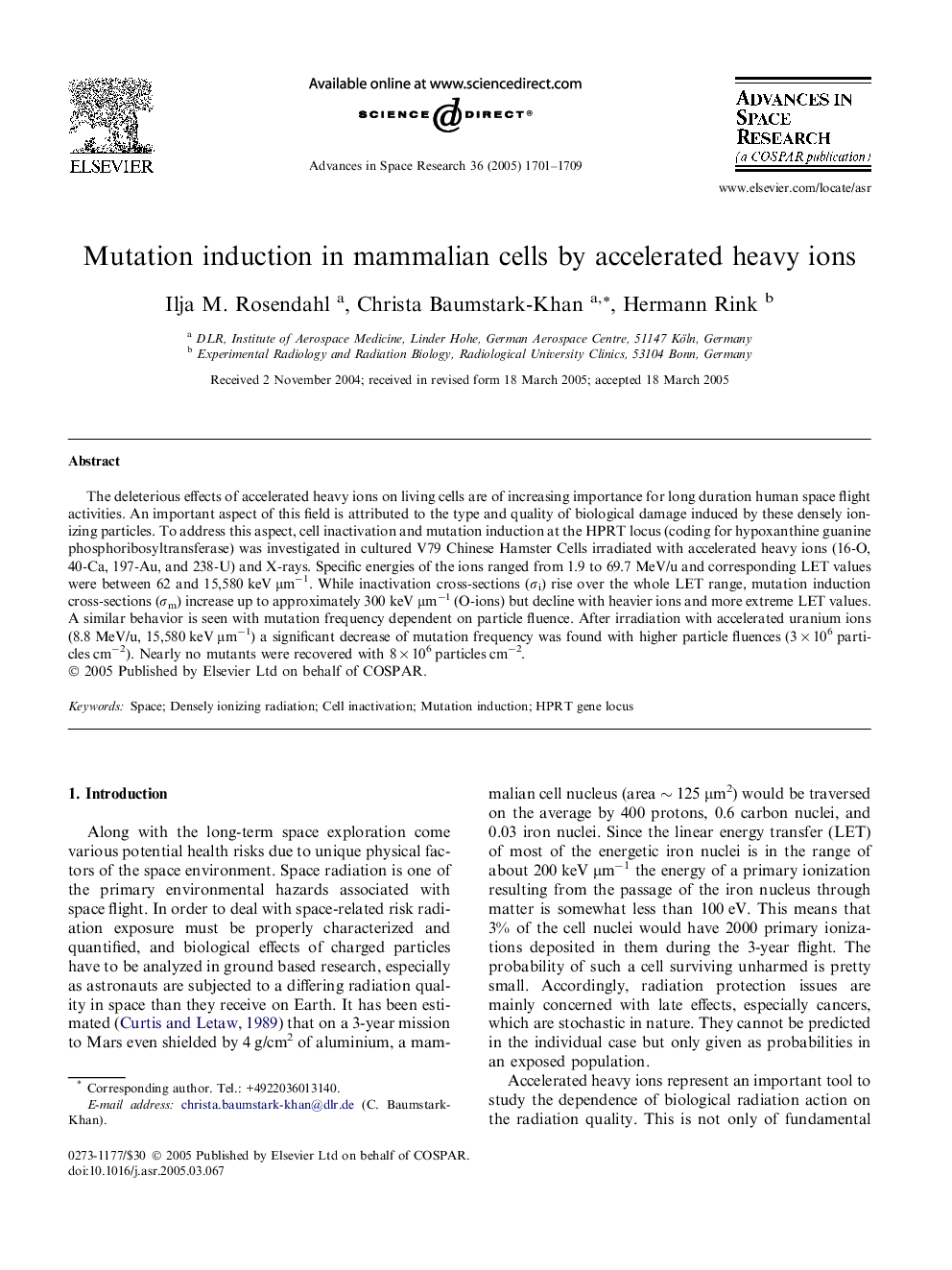| Article ID | Journal | Published Year | Pages | File Type |
|---|---|---|---|---|
| 10694914 | Advances in Space Research | 2005 | 9 Pages |
Abstract
The deleterious effects of accelerated heavy ions on living cells are of increasing importance for long duration human space flight activities. An important aspect of this field is attributed to the type and quality of biological damage induced by these densely ionizing particles. To address this aspect, cell inactivation and mutation induction at the HPRT locus (coding for hypoxanthine guanine phosphoribosyltransferase) was investigated in cultured V79 Chinese Hamster Cells irradiated with accelerated heavy ions (16-O, 40-Ca, 197-Au, and 238-U) and X-rays. Specific energies of the ions ranged from 1.9 to 69.7 MeV/u and corresponding LET values were between 62 and 15,580 keV μmâ1. While inactivation cross-sections (Ïi) rise over the whole LET range, mutation induction cross-sections (Ïm) increase up to approximately 300 keV μmâ1 (O-ions) but decline with heavier ions and more extreme LET values. A similar behavior is seen with mutation frequency dependent on particle fluence. After irradiation with accelerated uranium ions (8.8 MeV/u, 15,580 keV μmâ1) a significant decrease of mutation frequency was found with higher particle fluences (3 Ã 106 particles cmâ2). Nearly no mutants were recovered with 8 Ã 106 particles cmâ2.
Related Topics
Physical Sciences and Engineering
Earth and Planetary Sciences
Space and Planetary Science
Authors
Ilja M. Rosendahl, Christa Baumstark-Khan, Hermann Rink,
